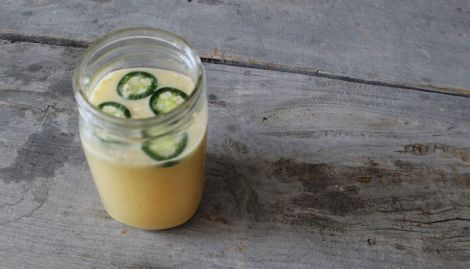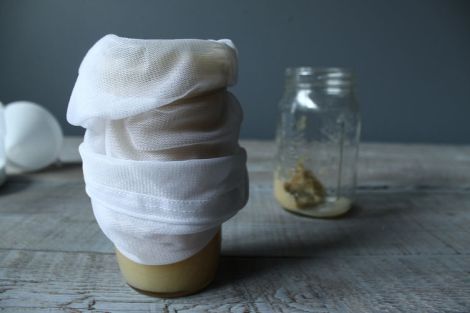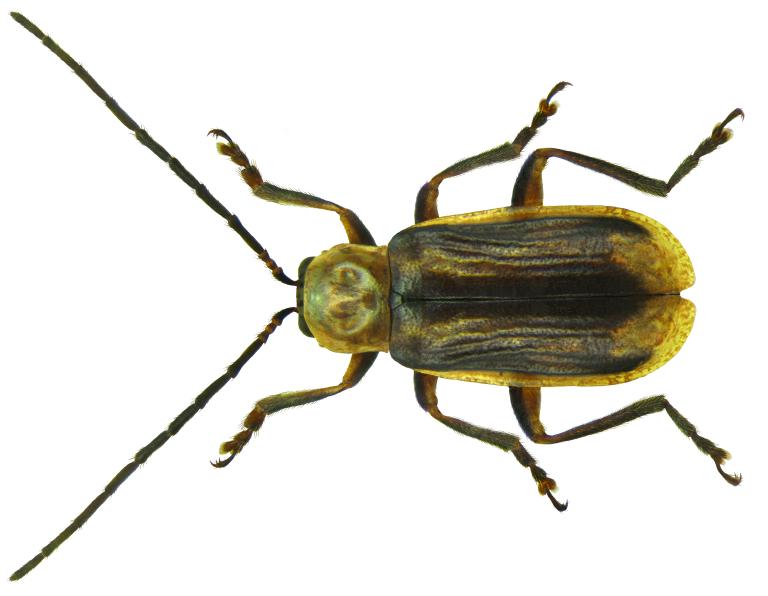This article originally appeared on Food52.com.
There are two types of people in this world: people who like their ginger beer sweet, subtle, and unassuming, and people who like their ginger beer to kick them hard in the back of the throat. (I guess there are also people out there who don’t like ginger beer, but for now I’m going to pretend they don’t exist.)
You know real ginger beer if you’ve tasted it. The second you take a sip, it stomps on your tongue with steel-toed boots, taking glee in reminding you how spicy raw ginger truly is.
My version of ginger beer is like the unfiltered, uncensored, hardcore stuff, but with a teensy little bonus: alcohol. While England has been sipping on alcoholic ginger beer for hundreds of years, America has just begun to discover this gem. Well, Brits, your secret’s out.
In addition to its spicy, addictive taste and its boozy bonus, alcoholic ginger beer is also plain-old fun to make. If you dream of being a full-fledged brewmaster but lack the time, equipment, and beard, ginger beer is the perfect starting point. With only a jar, some pantry staples, and a few clean soda bottles, you can have a solidly delicious brew in only three weeks. It might take some experimenting to get it right, but the journey is half the fun. This recipe is really more like a set of guidelines — you must follow your instincts.
Alcoholic Ginger Beer
Makes several liters of ginger beer
2 1/2 cups (600 milliliters) warm, filtered (or pre-boiled) water
1 1/2 teaspoons champagne yeast (available at your local brewing store or on the internet)
Freshly grated ginger
Granulated sugar
Juice of 2 lemons
1 jalapeño, sliced (optional)
1 large glass jar
2 to 3 clean plastic soda bottles

Catherine Lamb
First thing’s first: Start by making a “plant” for your ginger beer. Stir the yeast into the water until dissolved. Add in 1 tablespoon freshly grated ginger, 1 tablespoon sugar, the lemon juice, and the sliced jalapeño, if you’re using it. Stir to combine. (The jalapeño will give your ginger beer that kick you can feel in the back of your throat — if you don’t want it that strong, feel free to omit it.)

Catherine Lamb
Pour the mixture into a glass jar — one that’s large enough for the liquid to fit comfortably, with a bit of extra space. Cover with a clean, dry kitchen towel and secure it with a rubber band. Place the jar in the warmest place in your house: next to your heater, near the refrigerator, or by a heat vent.
Every day for the next week you’ll have to “feed” your plant. First off, feel the bottle — it should be slightly warm. If it’s too cold, your yeast will go into hibernation and stop working, and if it’s too hot your yeast could die. They’re a very temperamental bunch.
Take the towel off your jar and add another tablespoon of grated ginger and another tablespoon of sugar. Stir until the sugar dissolves, then replace the towel and put your plant back in a warm place. Do this every day for a week — just think of it as a babysitting job.

Catherine Lamb
After about a week, you should see small bubbles floating to the surface of your plant. You can keep your plant at this stage longer: The more you feed it, the more concentrated the ginger flavor will become. Don’t stress too much about measurements — you can adjust your flavors later.
Now it’s time to bottle! Think ahead to how many bottles of ginger beer you’ll want to make. Make sure to use plastic soda bottles — glass bottles could explode from carbonation.
Estimate how much water you’ll need to fill these bottles two-thirds of the way full. Then, dissolve enough sugar into the water so that it tastes very sweet — as sweet as soda. Don’t worry about overdoing it; the sugar is there to act as food for the yeast, so most of it will get eaten up and turned into alcohol. You can always adjust the sugar content later.

Catherine Lamb
Using a cheesecloth, strain the plant out into a large measuring cup or bowl. Next, use a funnel to add the sweetened water to the bottles until they are two-thirds of the way full. Add about a cup of the plant liquid to each clean, dry soda bottle — more if you want your ginger beer stronger, less if you want it less intense. Stir with a chopstick to combine. You can dip your finger in and taste here to see if the flavor concentration is to your liking. If it tastes watery, add more plant liquid.
Seal the bottles tightly with their caps and put them back in the same warm place where you once kept the plant. Squeeze the bottles daily to test how they’re carbonating.

Catherine Lamb
After a few days, they should become difficult to compress; when they feel like a rock and are impossible to squeeze at all, slowly start to unscrew the cap just until you hear hissing, but do not open it all the way. Whenever the bottle is impossible to compress, let out the carbonation, then seal it back tightly.
In a week and a half to two weeks, the yeast should have eaten up most of the sugar in the bottle. This means your ginger beer is ready to open up and taste! There’s not a hard and fast rule for how to tell when this is done — you’ve got to go by intuition and trial and error. If you have multiple bottles, open one up and taste test after a week and a half. Add more sugar or lemon juice if you think your ginger beer needs it.

Catherine Lamb
Serve ice cold with citrus wedges and a rum float if you’re feeling dangerous. Make sure to consume the whole bottle within 24 hours after opening — feel free to enlist a friend or two for help. You should probably throw a party to show off your incredible brewing skills.

Catherine Lamb
It’s impossible to gauge the alcohol content of your ginger beer, but it should be a bit less than that of a light beer. Enjoy!
See the full recipe (and save and print it) here.



